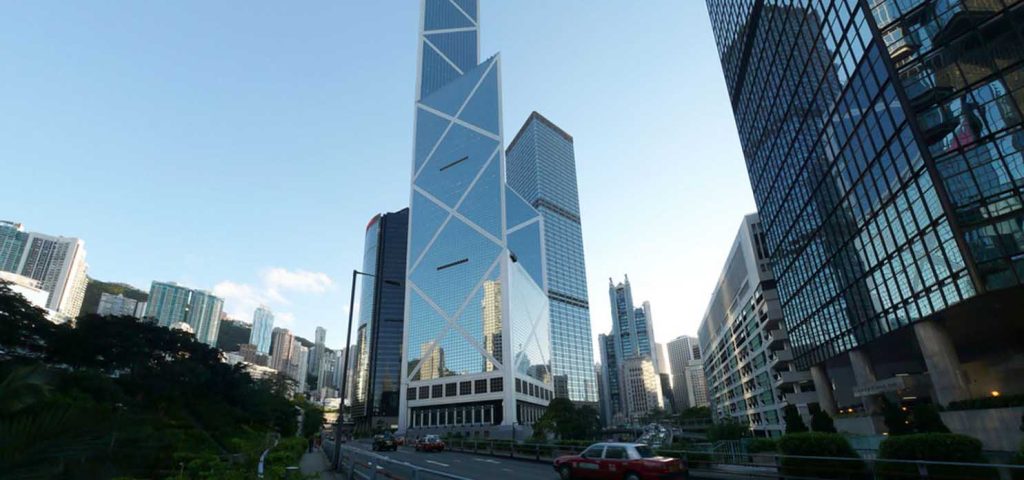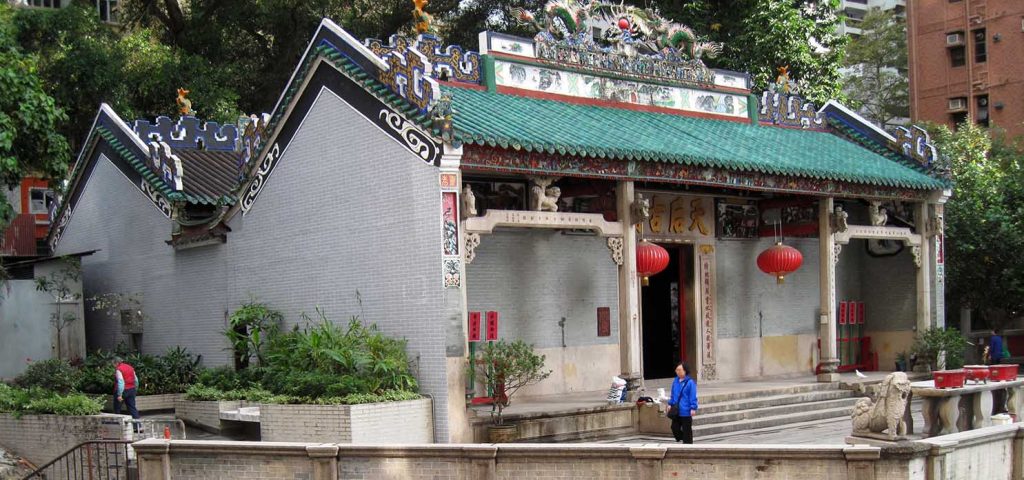Embarking on a captivating exploration of Hong Kong Island’s diverse architectural marvels, I delved into the heart of this dynamic metropolis. Each landmark’s intricacies are meticulously unraveled, providing detailed insights into services, advantages and drawbacks, geographical locations, transportation nuances, discounts, ticket pricing, recommendation scores, and personal impressions of booking platforms. Join me on this architectural odyssey through the bustling streets and skylines that define the unique charm of Hong Kong Island.
The Peak Tower: A Panoramic Spectacle
Ascending to The Peak Tower, the breathtaking panorama of Hong Kong’s skyline unfolded before me. Services included observation decks, dining options, and souvenir shops. The advantage of The Peak was the unparalleled view, yet peak hours led to crowded conditions. Perched atop Victoria Peak, The Peak Tower offers a spectacular viewpoint.
Transportation:
From Hong Kong International Airport, the Airport Express train takes approximately 24 minutes to reach Hong Kong Station. Connecting to The Peak Tram Lower Terminus can be done by a combination of buses or a taxi ride. Alternatively, a stroll from Admiralty Station provides access. Ticket prices vary, with occasional promotions for package deals. Online booking is recommended for priority access.
Hong Kong Convention and Exhibition Centre: Waterfront Elegance
Situated along the Victoria Harbour waterfront, the Hong Kong Convention and Exhibition Centre (HKCEC) exudes architectural elegance. Services encompass exhibition spaces, event venues, and waterfront promenades. The advantage lies in its prime waterfront location, offering stunning views. However, during major events, crowded spaces could hinder the overall experience.As I approached the Hong Kong Convention and Exhibition Centre (HKCEC) along the Victoria Harbour waterfront, the architectural elegance of the building immediately captured my attention. Its sleek design and modern aesthetic seamlessly blended with the surrounding skyline, creating a striking silhouette against the backdrop of the bustling city.
The services offered within the HKCEC were expansive, catering to a diverse range of events. The exhibition spaces were vast and versatile, accommodating everything from international trade shows to cultural exhibits. The event venues were equipped for conferences, seminars, and performances, making the center a hub for various gatherings. The waterfront promenades added an extra layer of charm, providing a picturesque setting for leisurely strolls along the harbor.
The prime waterfront location of the HKCEC was undeniably its greatest advantage. The stunning views of Victoria Harbour framed by the architectural marvel of the center added a touch of grandeur to any event. As I attended conferences and exhibitions, I couldn’t help but be captivated by the panoramic scenes unfolding beyond the glass walls.
The allure of the waterfront setting also came with a caveat, particularly during major events. The popularity of the HKCEC meant that crowded spaces became an inevitable part of the experience. Navigating through bustling exhibition halls and crowded waterfront promenades sometimes posed challenges, hindering the overall enjoyment of the event.
Despite the occasional congestion, the HKCEC remained a beacon of cultural and commercial activity in Hong Kong. The convenience of its location, coupled with the architectural sophistication and the breathtaking views it offered, outweighed the challenges presented by crowded spaces during peak events.
As I explored the various facets of the HKCEC, I couldn’t help but appreciate the dynamic nature of this waterfront venue. It was a place where the vibrancy of Hong Kong’s business and cultural scene converged, and where, amid the crowds, one could still find moments of inspiration against the stunning backdrop of Victoria Harbour. The HKCEC wasn’t just a convention center; it was a symbol of Hong Kong’s cosmopolitan energy, where the worlds of commerce, culture, and natural beauty seamlessly intertwined along the captivating waterfront.
Transportation:
From Hong Kong International Airport, the Airport Express train takes around 24 minutes to reach Hong Kong Station. A short taxi ride or walk connects to the HKCEC. Public buses and trams also serve the area. Admission to public areas is often free, with fees for specific events. Online booking is advisable for ticketed events.
Bank of China Tower: Modernity’s Symbol

The Bank of China Tower, standing tall in Central, symbolizes modern architecture. Services within the building are business-oriented, but visitors can appreciate the exterior and adjoining public space. The advantage is its iconic status, providing a glimpse into Hong Kong’s financial prowess. Limited public access might disappoint those seeking a more immersive experience.
Transportation:
From Hong Kong International Airport, the Airport Express train takes around 24 minutes to reach Hong Kong Station. The Bank of China Tower is centrally located in Admiralty. Admiralty Station connects to the building, with a short walk. While exterior appreciation is free, access to interior spaces is restricted. No booking is necessary for external viewing.
Man Mo Temple: Tranquility Amid Urban Hustle
Nestled in Sheung Wan, the Man Mo Temple provides a serene escape from urban hustle. Services include traditional ceremonies and cultural exhibits. The advantage is cultural immersion, offering a contrast to the modern skyline. The compact space, however, means it could get crowded during peak times.As I stepped into the tranquil enclave of Sheung Wan, the Man Mo Temple stood as a testament to the city’s rich cultural heritage. Nestled amidst the urban hustle, this haven of serenity beckoned with its ornate architecture and the lingering scent of incense in the air.
Exploring the Man Mo Temple revealed a space where tradition and spirituality converged. The services offered, including traditional ceremonies and cultural exhibits, provided a glimpse into the rituals that have graced this sacred space for generations. The sound of prayers and the faint hum of cultural activities created a soothing ambiance that transported me to another era, offering a stark contrast to the modern skyline just beyond the temple’s gates.
The advantage of visiting the Man Mo Temple was the opportunity for cultural immersion. As I participated in the ceremonies and observed the intricate details of the cultural exhibits, I felt a profound connection to the traditions that have shaped Hong Kong’s identity. It was a refreshing escape from the fast-paced urban life, allowing me to delve into the roots of the city’s history and beliefs.
The compact nature of the temple also meant that, during peak times, it could become a bustling hub of activity. As visitors and locals alike sought solace and cultural enrichment, the limited space sometimes translated into crowded conditions. Navigating through the temple’s halls required a degree of patience, but the vibrant atmosphere created by the diverse array of visitors added a unique energy to the experience.
Despite the occasional crowds, the Man Mo Temple remained a captivating retreat, offering a serene escape in the heart of the city. The ornate decorations, the wafting tendrils of incense, and the rhythmic cadence of traditional ceremonies formed a harmonious symphony that resonated with the cultural soul of Hong Kong.
Leaving the temple, I carried with me not just the visual memories of its intricate architecture but a sense of tranquility that lingered in my thoughts. The Man Mo Temple wasn’t just a physical space; it was a bridge between the past and the present, a place where cultural traditions flourished amid the modernity of Sheung Wan. It was a reminder that, in the heart of a bustling metropolis, pockets of serenity and cultural richness could be found, inviting all who entered to experience the beauty of Hong Kong’s diverse heritage.
Transportation:
From Hong Kong International Airport, the Airport Express train takes around 24 minutes to reach Hong Kong Station. Sheung Wan is accessible via MTR or a short taxi ride. Admission to Man Mo Temple is often free, with donations accepted. No advanced booking is required for general visits.
International Finance Centre (IFC): Hub of Commerce
The International Finance Centre (IFC), with its two towering structures, symbolizes Hong Kong’s economic prowess. Services within the complex include luxury shopping, dining, and corporate spaces. The advantage is the comprehensive range of facilities. However, the upscale nature might limit accessibility to a broader audience.
Transportation:
From Hong Kong International Airport, the Airport Express train takes around 24 minutes to reach Hong Kong Station. IFC is conveniently located in Central. Admiralty Station connects directly to the complex. Exterior appreciation is free, with fees for specific attractions. Online booking is recommended for exclusive experiences.
Tin Hau Temple: Historic Gem in Causeway Bay

Exploring Causeway Bay, the Tin Hau Temple stood out as a historic gem. Services include traditional ceremonies and cultural exhibits. The advantage is historical significance, providing a glimpse into Hong Kong’s roots. The limited space, however, means large crowds could affect the peaceful ambiance.As I strolled through the bustling streets of Causeway Bay, the Tin Hau Temple emerged as a historical gem, nestled amidst the urban vibrancy. The allure of this centuries-old sanctuary beckoned me to explore its cultural richness and traditions, offering a respite from the lively tempo of modern Hong Kong.
Stepping into the Tin Hau Temple, I was immediately captivated by the atmosphere steeped in history. Traditional ceremonies and cultural exhibits unfolded within its sacred confines, creating a space where the echoes of Hong Kong’s roots reverberated through time. The scent of burning incense, the rhythmic cadence of prayers, and the intricate details of the temple’s architecture transported me to an era where maritime traditions and spiritual reverence intertwined.
The advantage of visiting the Tin Hau Temple lay in its historical significance. As I immersed myself in the traditional ceremonies, I gained insights into the cultural tapestry that laid the foundation for Hong Kong’s identity. The temple’s role as a guardian of the sea and protector of fishermen and sailors added depth to my understanding of the city’s maritime heritage.
The limited space within the temple precincts meant that the peaceful ambiance could be affected during peak times. Large crowds, drawn by the allure of the temple’s history and cultural significance, occasionally contributed to a bustling atmosphere. Navigating through the narrow passageways amidst a sea of visitors required patience, yet it was a testament to the enduring appeal of this historical site.
Despite the occasional crowds, the Tin Hau Temple remained a place of tranquility and reverence. The traditional ceremonies continued with a timeless rhythm, creating a sense of continuity between the past and the present. The cultural exhibits, showcasing artifacts and stories from Hong Kong’s seafaring past, provided a tangible link to the city’s roots.
Leaving the Tin Hau Temple, I carried with me a sense of connection to Hong Kong’s history and a deep appreciation for the cultural richness embedded in its urban landscape. The Tin Hau Temple in Causeway Bay wasn’t merely a relic of the past; it was a living testament to the resilience of tradition in the midst of a modern metropolis, inviting all who entered to witness the enduring spirit of Hong Kong’s heritage.
Transportation:
From Hong Kong International Airport, the Airport Express train takes around 24 minutes to reach Hong Kong Station. Causeway Bay is easily accessible by MTR or taxi. Admission to Tin Hau Temple is often free, with donations appreciated. No advanced booking is required for general visits.
Hong Kong Island’s Architectural Symphony
My journey through Hong Kong Island’s architectural wonders was a symphony of contrasts, where modern skyscrapers coexist with ancient temples, and bustling commerce meets serene cultural spaces. Each landmark presented a unique facet of this dynamic city. While challenges such as crowds and limited access to certain spaces existed, the overall experience was an enriching tapestry of Hong Kong’s diverse architectural landscape. Booking through reliable platforms ensured seamless entry, enhancing the accessibility of these iconic sites. Hong Kong Island, with its architectural marvels, stands as a testament to the city’s blend of tradition and modernity, inviting travelers to witness its captivating allure.